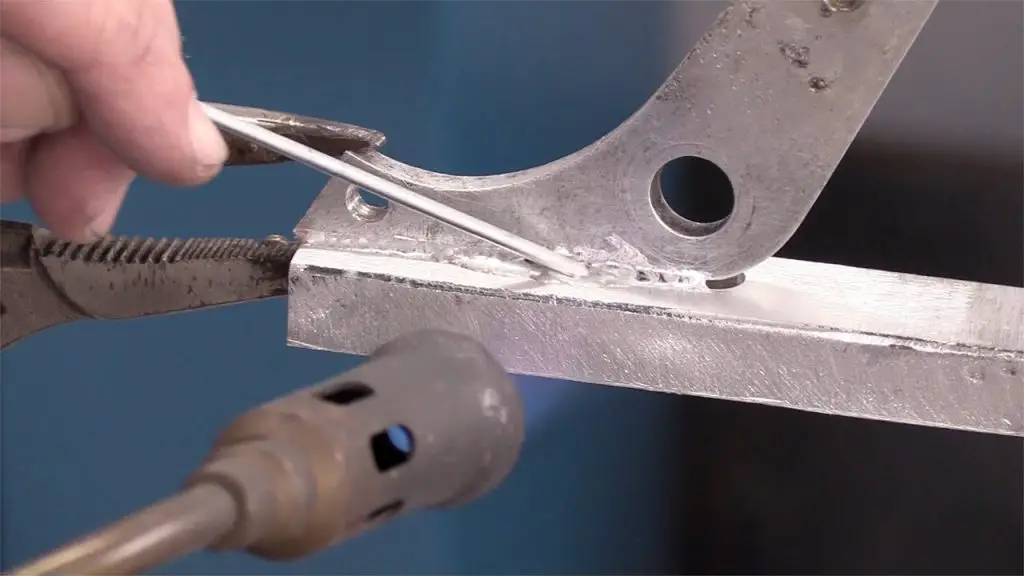For aluminum welding, pure argon gas is commonly used as a shielding gas, particularly in TIG and MIG welding processes. Argon provides excellent arc stability, reduces weld spatter, and ensures a clean, strong weld with minimal oxidation when working with aluminum and its alloys.
Read on to learn more about when and why each of these gasses is used in aluminum welding.
Table of Contents
What Gas Do You Use for Aluminum Welding?
When it comes to shielding gasses for welding aluminum, the two gasses of choice are typically argon and helium. Welders use each of these gasses in isolation or mix them depending on the situation.
If you compare the frequency with which each gas is used for aluminum welding, pure argon would come out on top. This holds true for both gas tungsten arc welding (GTAW) and gas metal arc welding (GMAW) of aluminum.
As for pure helium, welders only use it as a shielding gas for aluminum welding in certain situations.

Why Do You Use an Argon/Helium Mixture for Aluminum Welding?
So, we’ve established that argon and helium are the most commonly used gasses for aluminum welding. Now let’s examine why that’s the case.
Argon is an inert gas. Therefore, it contributes to the stability of the electric arc produced during arc welding. That, in addition to its cleaning properties, is why it’s a great choice when welding aluminum.
Welders typically use pure argon in isolation when welding thin sheets of aluminum . 0.5 inches is roughly the cutoff thickness for which argon by itself is suitable.
For sheets thicker than this, we advise that you introduce some helium to your shielding gas mixture. That’s because helium has a higher level of heat conductivity and ionization potential.
In practice, this allows you to operate at significantly higher temperatures when welding. This is especially important when you’re working with thicker sheets of aluminum. This is because you need that extra heat to melt through them.
Plus, the ratio of argon to helium you should use in the shielding gas mixture depends on the thickness and the type of aluminum you intend to work on. This ratio can lie anywhere between 25% and 75% helium.
How to Weld Aluminum
If you fancy yourself a welder, it’s highly important that you have a working knowledge of how to weld aluminum. That’s because aluminum is a metal you’re almost certainly coming across due to its plethora of uses.
However, this material’s lightweight, corrosion-resistant properties are a two-edged sword. Sure, they make it great for all kinds of manufactured products, but they also make it difficult to weld.
This is because aluminum has a soft interior encased by a hard oxidized exterior. Therefore, it can be tricky to weld it without messing up.
Additionally, aluminum is prone to getting contaminated when it’s in a molten state. That’s why it’s essential that you clean it well before you even start the welding process.
Here’s how you can do so:
- Get rid of any residual dirt or contaminants on the aluminum’s surface. Do so by wiping it thoroughly with an acetone-soaked rag to remove any grease or oil that may be lingering.
- Next, scrape off the oxidized layer on the surface of the aluminum. Use a stainless steel wire brush and some strong acid to do this. After you’re done, thoroughly rinse the cleaned area and let it completely dry.
When you’re done with the steps above, cover the aluminum so that no contaminants can get to it and waste all your hard work. Note: This step should only be taken if you don’t intend to work on the aluminum straight after cleaning it.
You should also make sure to store the aluminum in dry conditions at room temperature. Keep in mind that if you don’t get a chance to start welding within two or three days, you’re going to have to clean the aluminum again.
Now that your aluminum is clean and ready to go, here’s how you can weld it:
Using Gas Tungsten Arc Welding (GTAW)
Gas tungsten arc welding is one of the most common techniques used with aluminum. It operates using an AC welding machine. Typically, this method uses pure argon or an argon-helium mixture as a shielding gas.
This method doesn’t require any wire feeding. Instead, you’ll need to deposit the filler material into the weld puddle, which is more convenient. Another perk of using GTAW with aluminum is that the AC current acts as an oxide layer remover and a decontaminant as you weld.
Conclusion
If you’re wondering what gas to use for aluminum welding, the answer to your question is argon, helium, or a mixture of both.
Your choice from those three options should depend on the thickness of the aluminum sheets you intend to work on. For thinner sheets, use pure argon. On the other hand, it’s better to use an argon-helium mix for thicker sheets.
